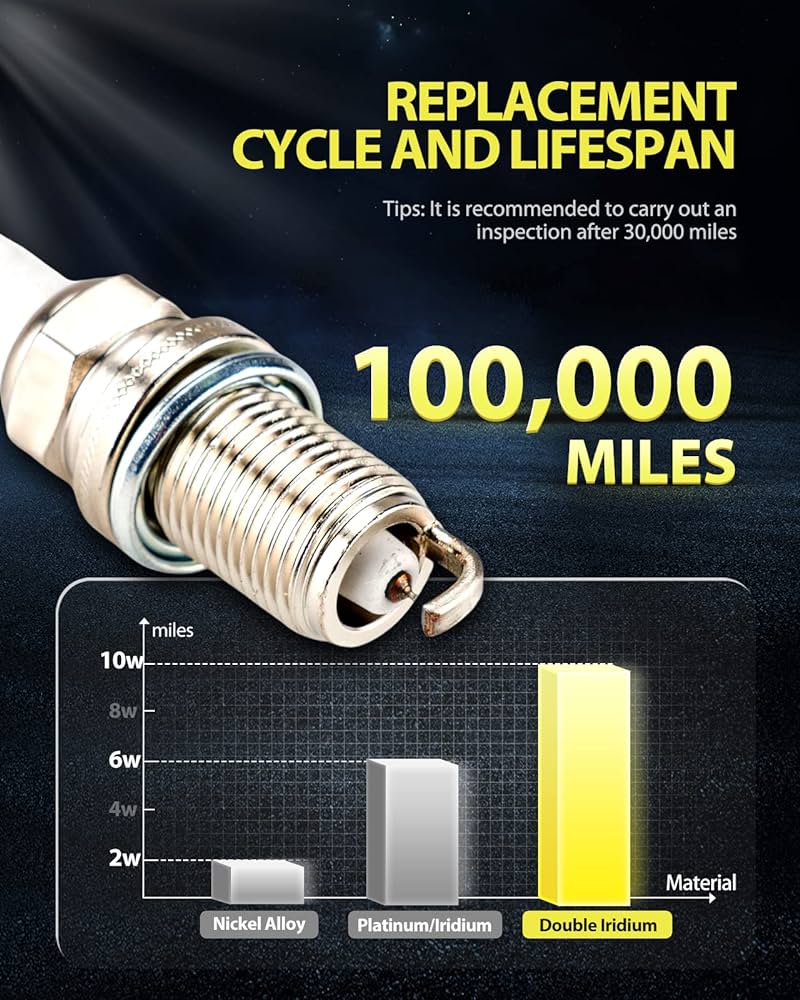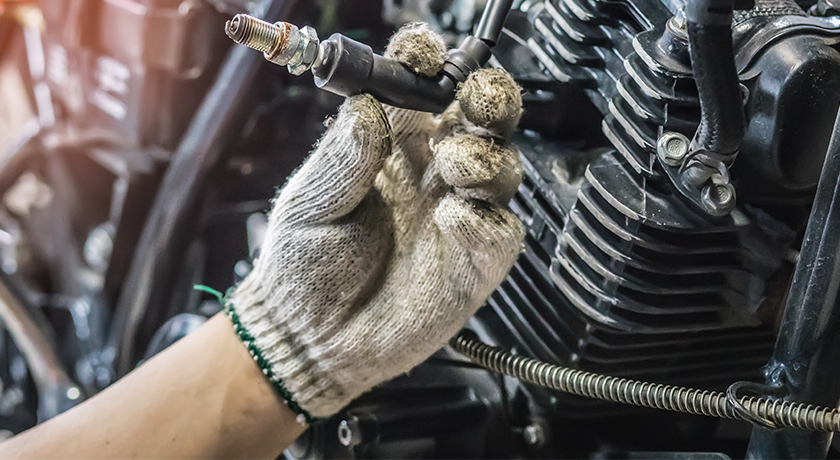Spark plug selection depends on many factors, such as engine model and displacement, fuel type, and riding habits. Therefore, it is difficult to say which spark plug is best. However, I can offer some general principles and advice to help you choose the right spark plug for your motorcycle.
The spark plug plays a crucial role in the operation of a motorcycle engine. Its primary function is to ignite the air-fuel mixture within the engine’s cylinder, initiating the combustion process that powers the motorcycle.

Here’s a breakdown of how the spark plug functions in a motorcycle engine:
The spark plug generates a high-voltage spark that ignites the compressed air-fuel mixture within the cylinder. This spark occurs at precisely the right moment, determined by the engine’s ignition system, to ensure maximum power and efficiency.
As the piston in the cylinder compresses the air-fuel mixture, the temperature and pressure increase. The spark plug must be able to withstand these high pressures without failing.
The spark plug’s tip must be able to transfer heat effectively to prevent overheating and ensure reliable spark generation. The heat range of the spark plug is critical, as it determines how well it can dissipate heat under various operating conditions.
The spark plug must be able to withstand the constant cycling of high temperatures, pressures, and electrical discharges without failing. It should also have good resistance to corrosion and wear.
The quality of the spark generated by the spark plug directly affects the combustion process and, therefore, the performance of the engine. A weak or intermittent spark can lead to incomplete combustion, reducing power and efficiency and potentially causing engine damage.
Motorcycle spark plugs are made up of several components that work together to create the spark needed for combustion.
The spark plug is the core component of the assembly. It has a threaded metal housing that screws into the engine’s cylinder head. There is a center electrode and a ground electrode inside the spark plug. When a high voltage is applied between these two electrodes, a spark is created that ignites the air-fuel mixture.
A spark plug boot is a rubber or plastic insulator that fits over the spark plug and secures it in the cylinder head. It prevents current from leaking from the spark plug and ensures that the spark only jumps between the electrodes.
This is a small metal or rubber gasket that sits between the spark plug boot and the cylinder head. It provides a seal to prevent oil and other contaminants from leaking into the spark plug assembly.
These wires connect the spark plug to the engine’s ignition system. They carry high-voltage current from the ignition coil to the spark plug, causing the spark to jump between the electrodes.
Some spark plug assemblies may include a spark plug cap, which is a metal cap that fits over the end of the spark plug wire. It provides additional protection against moisture, dirt, and other contaminants that may affect spark.
Spark plugs are generally divided into two types: resistive spark plugs and non-resistive spark plugs. Resistive spark plugs have an internal resistor that reduces electromagnetic interference and protects the vehicle’s electronic control system. Resistorless spark plugs have no resistance and are cheaper. However, spark plugs without resistance may produce electromagnetic interference and affect the normal operation of the vehicle’s electronic control system. Therefore, if your motorcycle uses an electronic ignition system, it is recommended to use resistive spark plugs.
Spark plugs have different thermal ranges, usually divided into cold type, medium type, and hot type. Thermal range selection should be based on the engine’s compression ratio, fuel type and riding habits. If the engine has a high compression ratio, a lean mixture, and is traveling at a fast speed, it is recommended to choose a cold spark plug to improve ignition performance and combustion efficiency. If the engine compression ratio is low, the fuel mixture is rich, and the riding speed is slow, it is recommended to choose a hot spark plug to prevent overheating and improve durability.

Spark plugs are usually made of copper, nickel, platinum, and iridium. Platinum and iridium spark plugs are more durable and have a longer service life, but they are more expensive. Nickel spark plugs are less durable but more affordable. Therefore, when choosing a spark plug, there is a balance between performance and cost that needs to be considered.
The electrode design of a spark plug also affects its performance. Look for spark plugs with a fine-wire electrode design for improved ignition and combustion.
Make sure to choose a spark plug that is compatible with your motorcycle’s make and model. Consult your owner’s manual or a trusted mechanic for guidance on the best spark plugs for your specific bike.
Check and replace motorcycle spark plugs regularly according to the manufacturer’s recommendations to ensure optimal performance and prevent potential problems.
The spark plug replacement intervals for motorcycles vary depending on the spark plug material and usage. Generally speaking, the replacement cycle of spark plugs is as follows:
Nickel spark plugs: Replace after 20,000 to 30,000 kilometers.
Platinum spark plugs: Replace after 40,000 to 50,000 kilometers.

Iridium spark plug: Replace after 100,000 kilometers.
The above replacement cycle is for reference only. The actual replacement cycle may vary depending on factors such as motorcycle model, usage environment, and driving habits. Therefore, it is very important to regularly check the condition of the spark plug and replace it according to the actual situation.
If the spark plug is found to have problems such as ablation, carbon deposition or excessive electrode gap, it should be replaced in time. In addition, if the motorcycle has problems such as difficulty starting, poor acceleration, or reduced engine power, it may also be a sign that the spark plugs need to be replaced.
Ultimately, the best spark plug for your motorcycle will depend on factors such as your riding style, your bike’s engine type, and your maintenance habits. It’s always a good idea to consult a knowledgeable mechanic or do thorough research before making a decision.
Join our mailing list to be the first one to know more new parts release and marketing info. Stay informed!


We will contact you within 1 working day, please pay attention to the email “wholesale@mpm-motorsports.com”
Comments